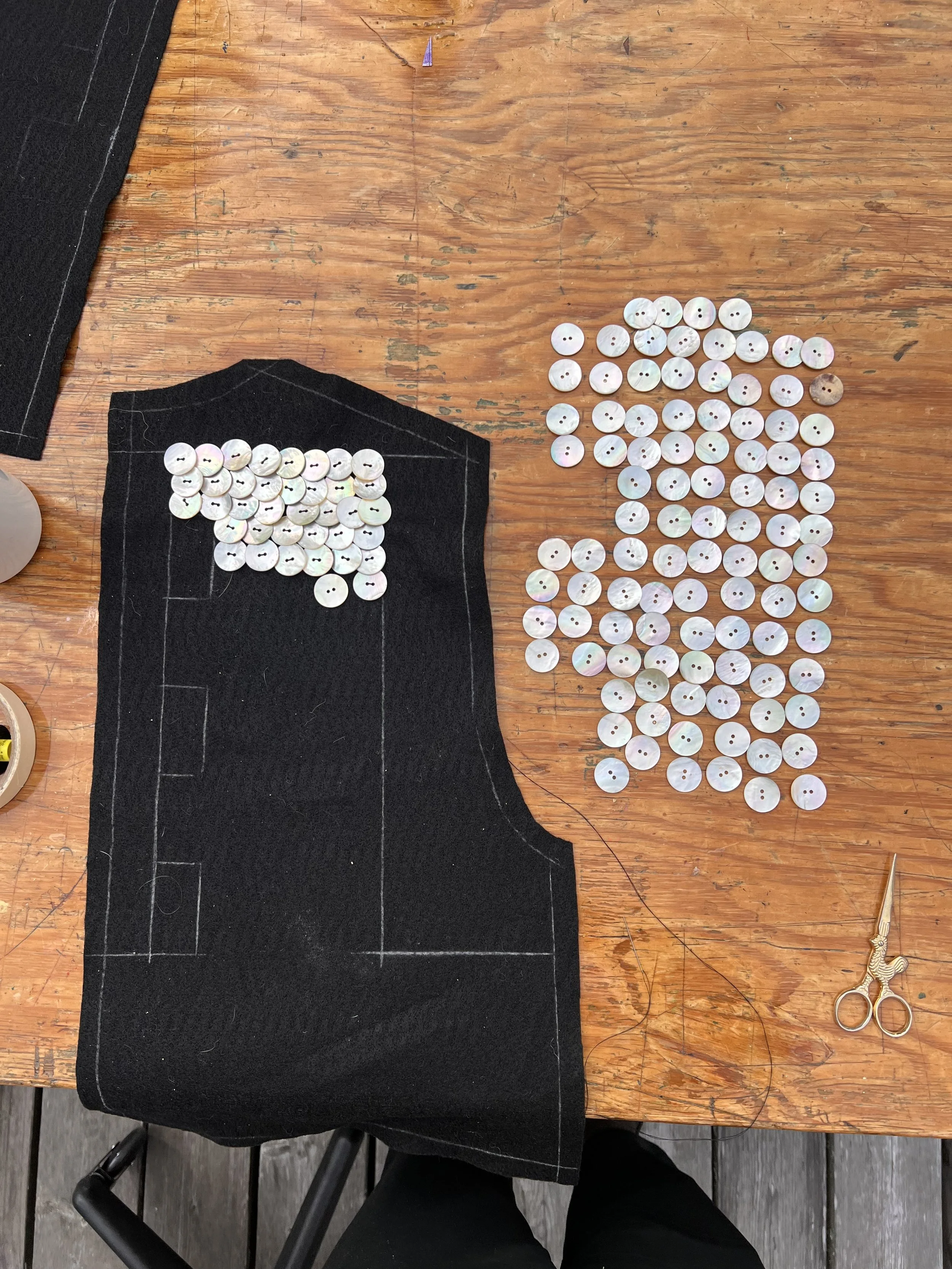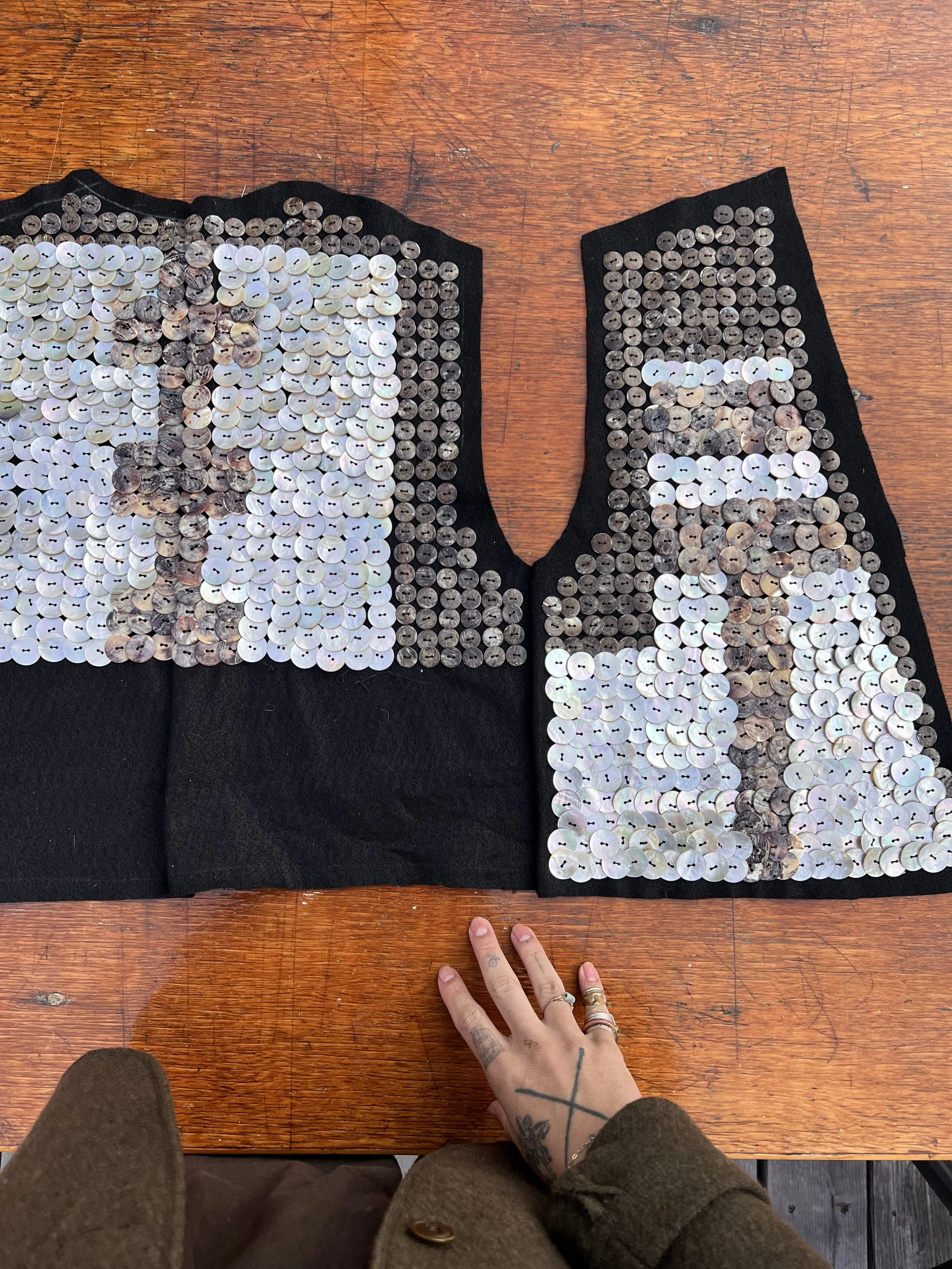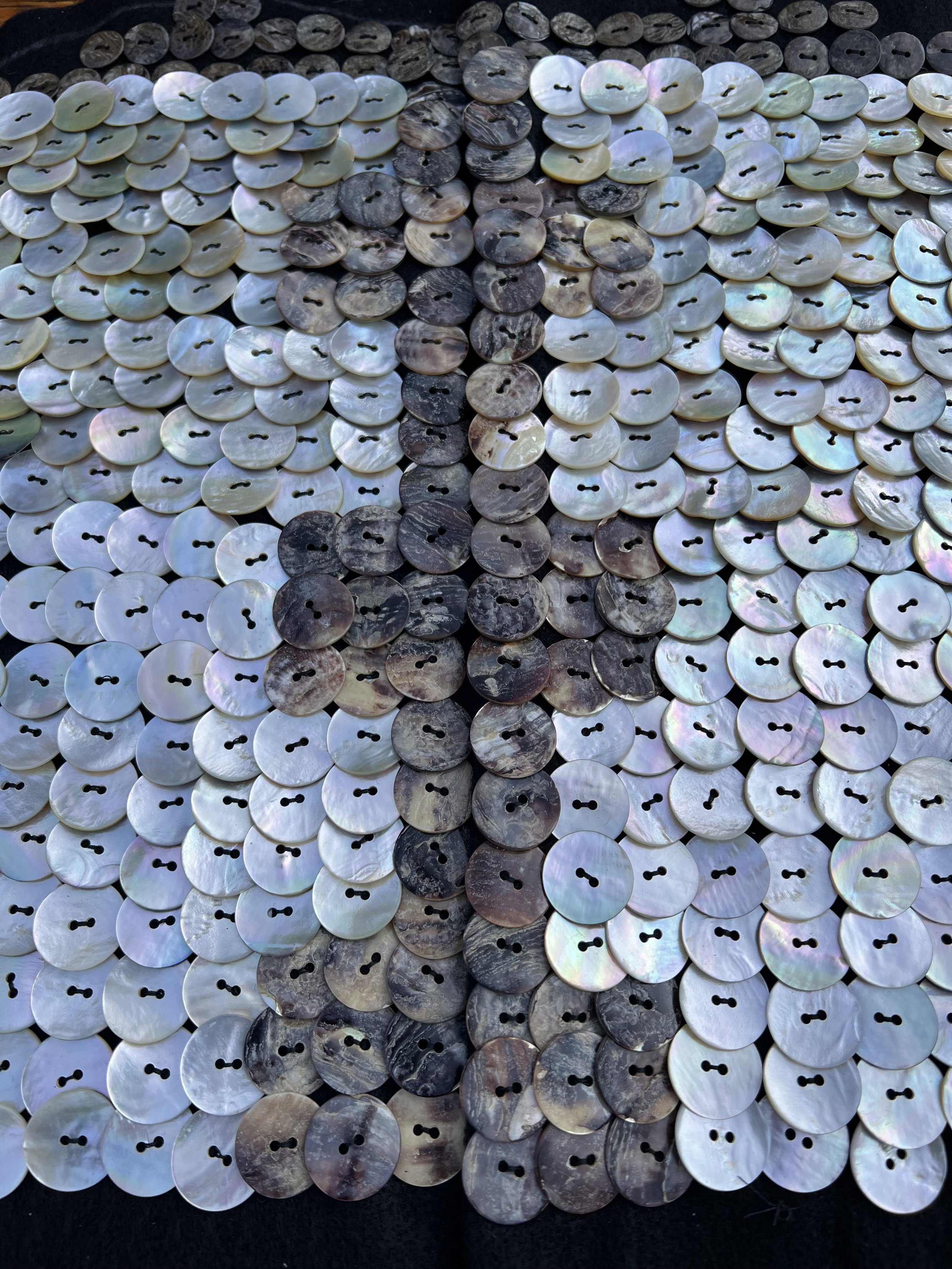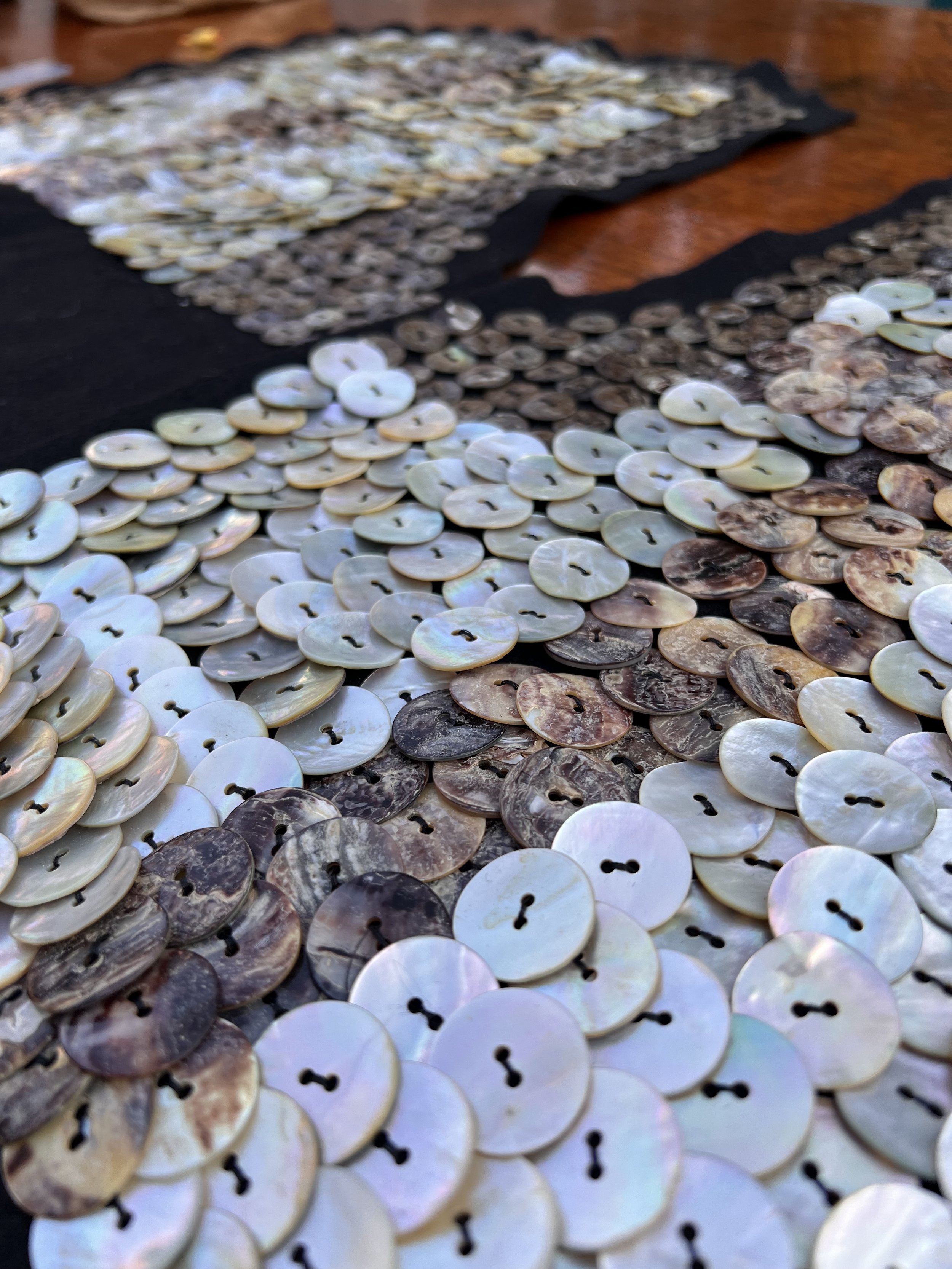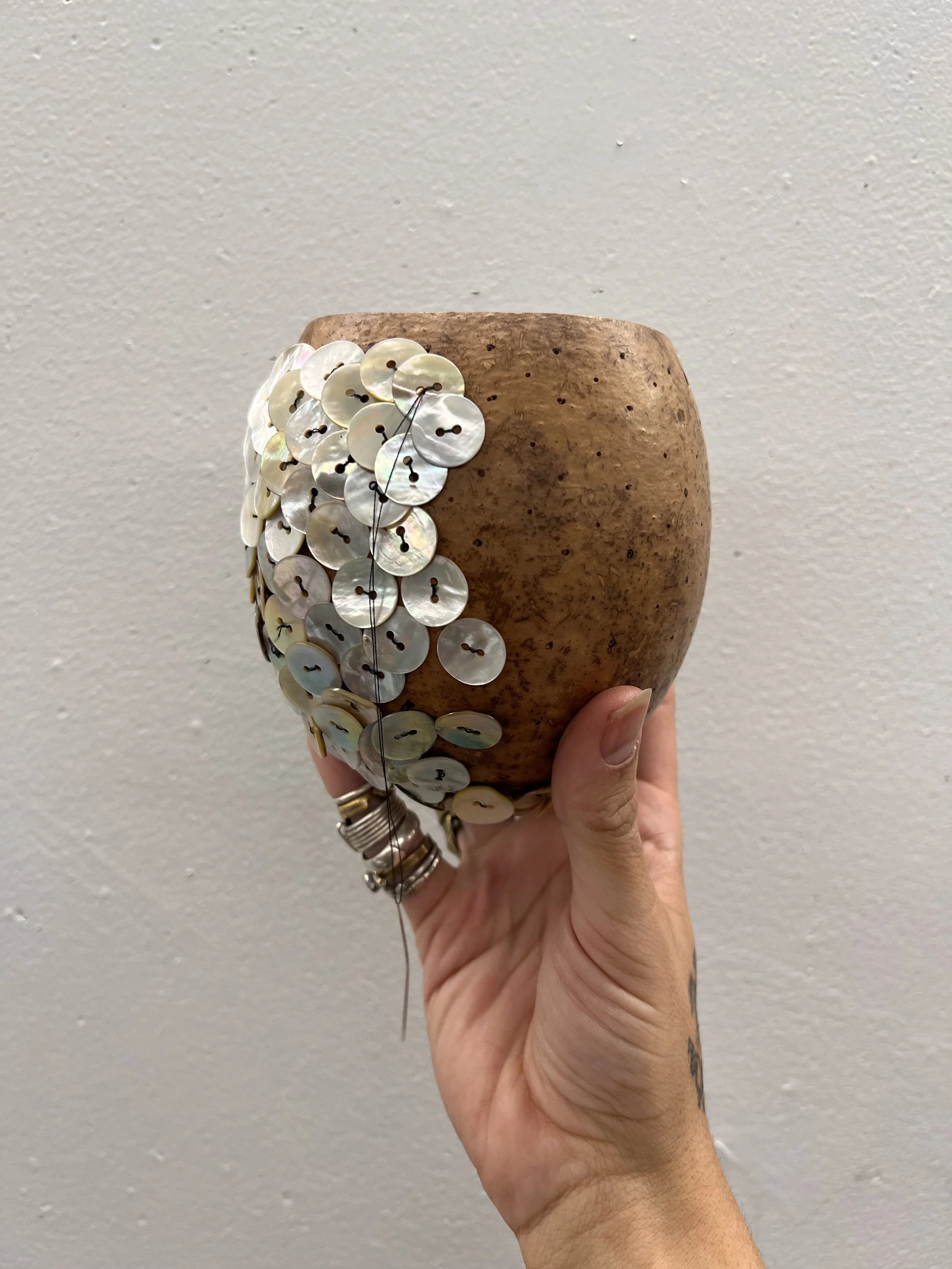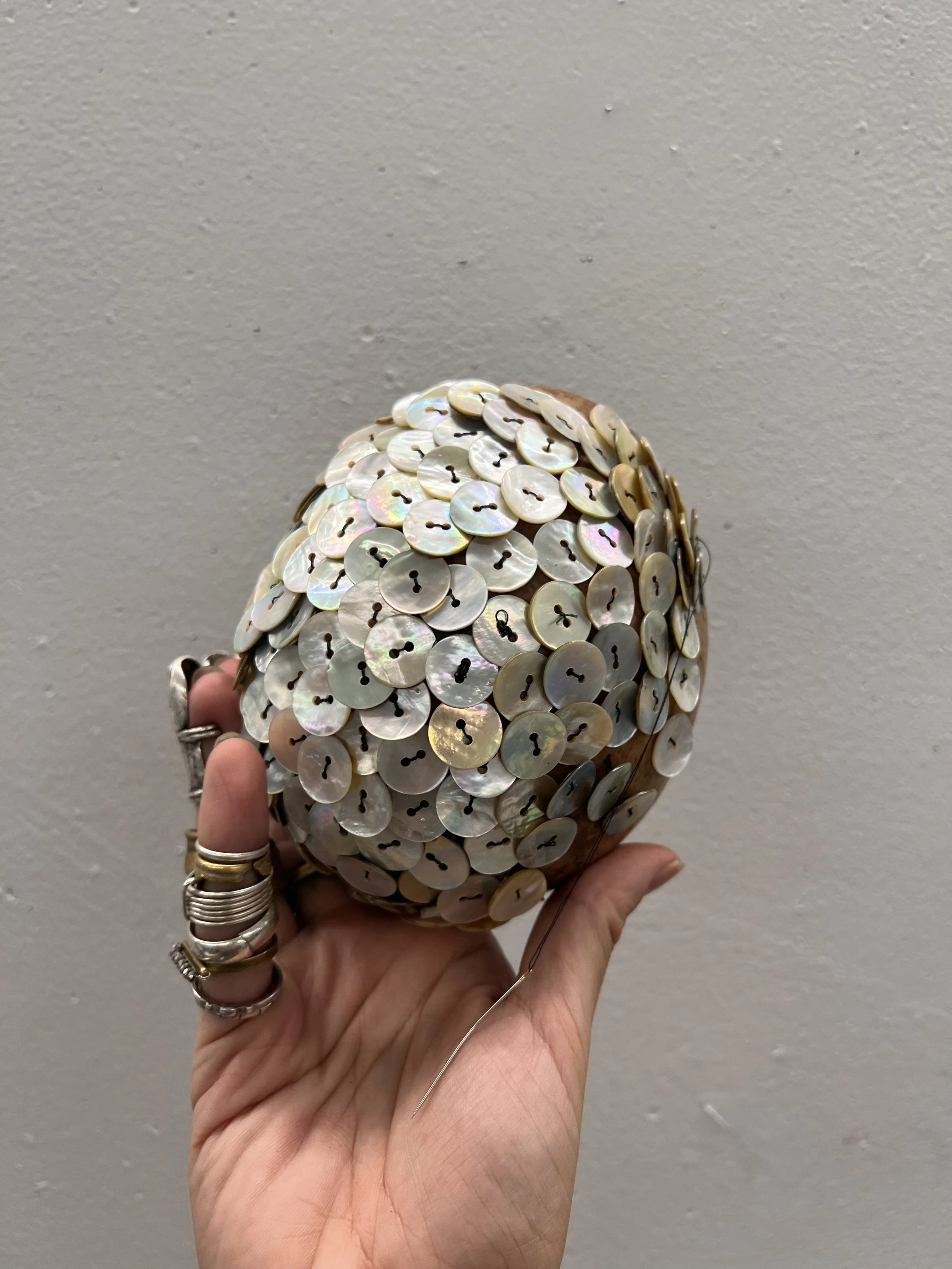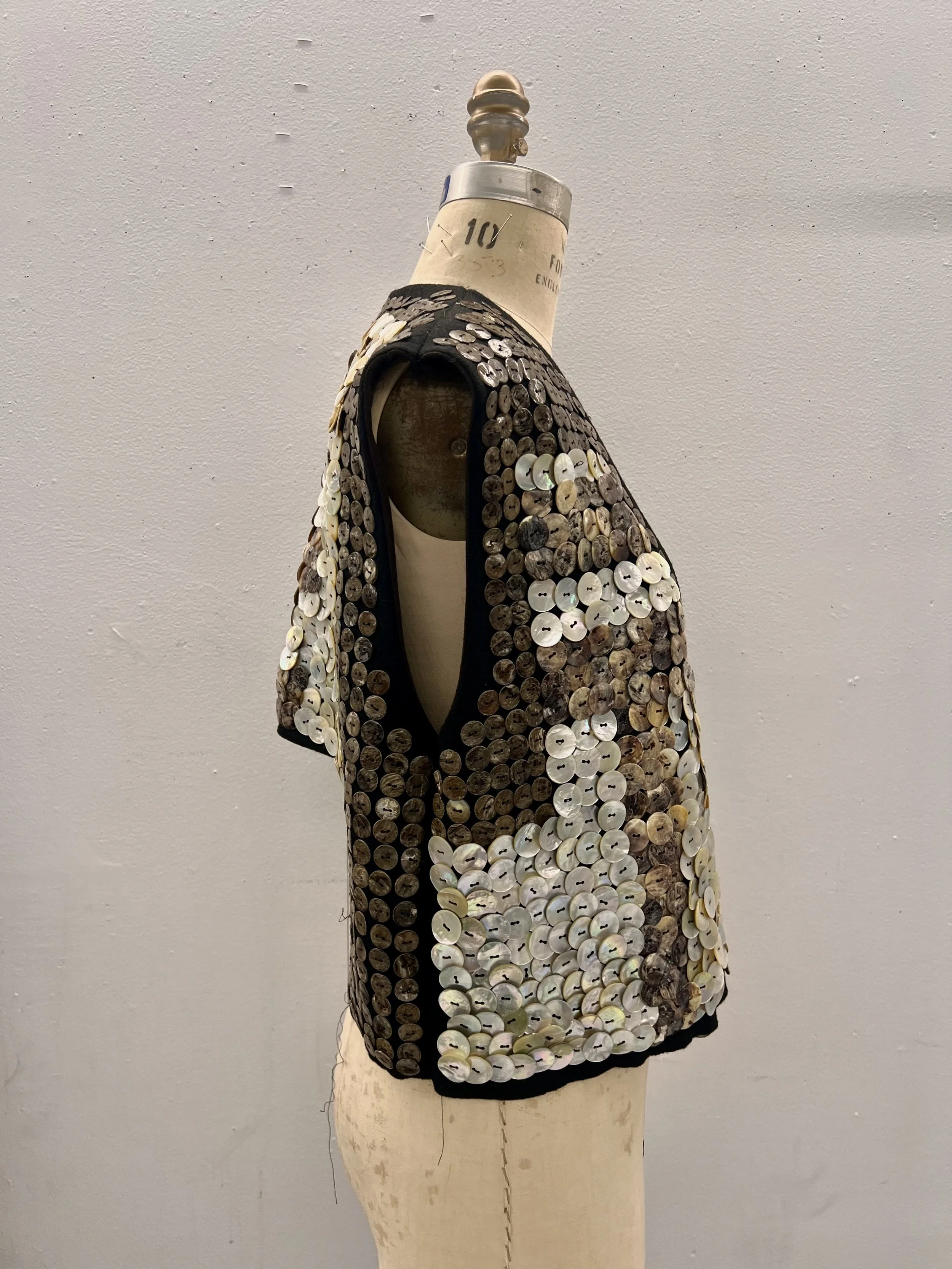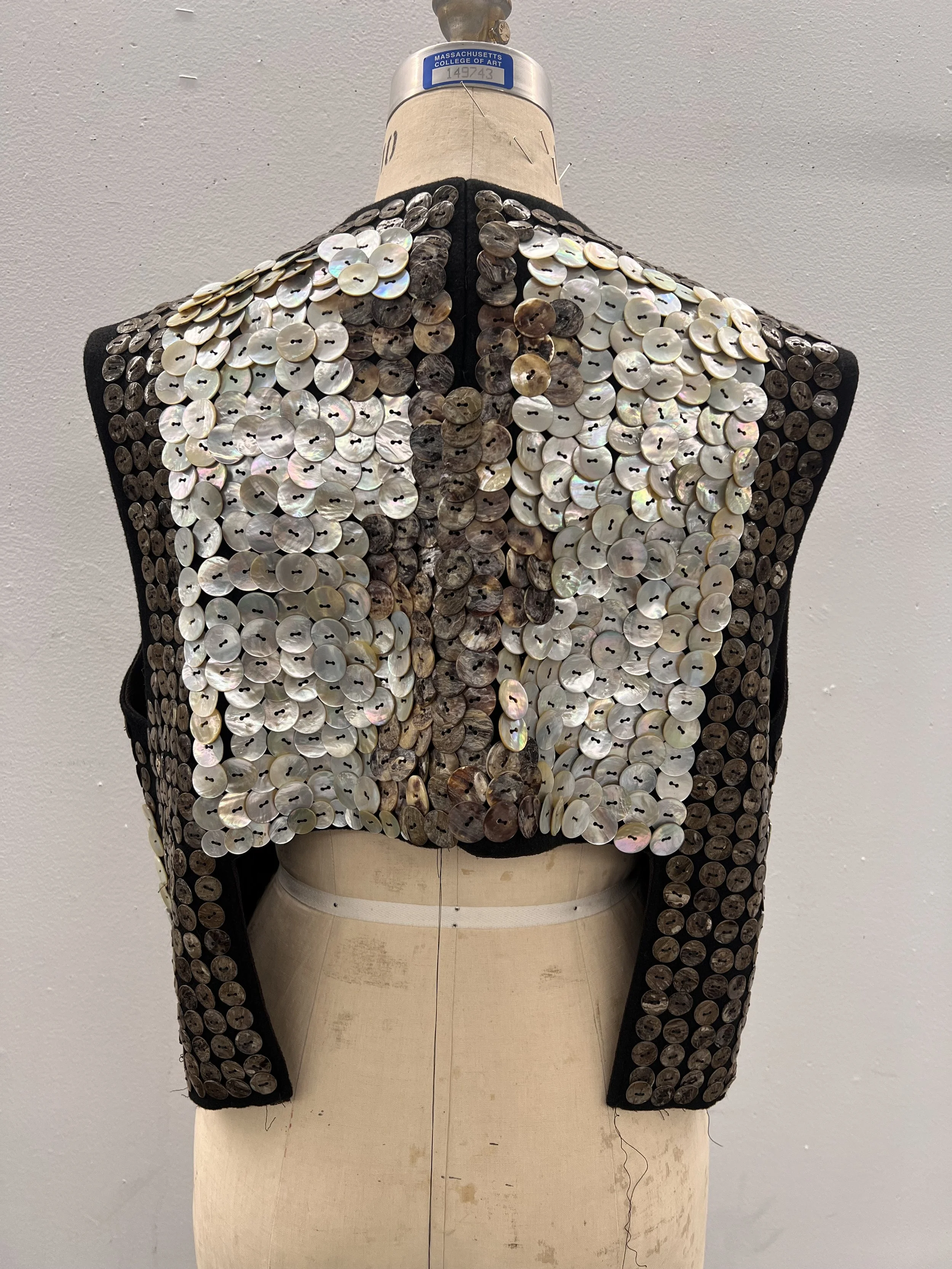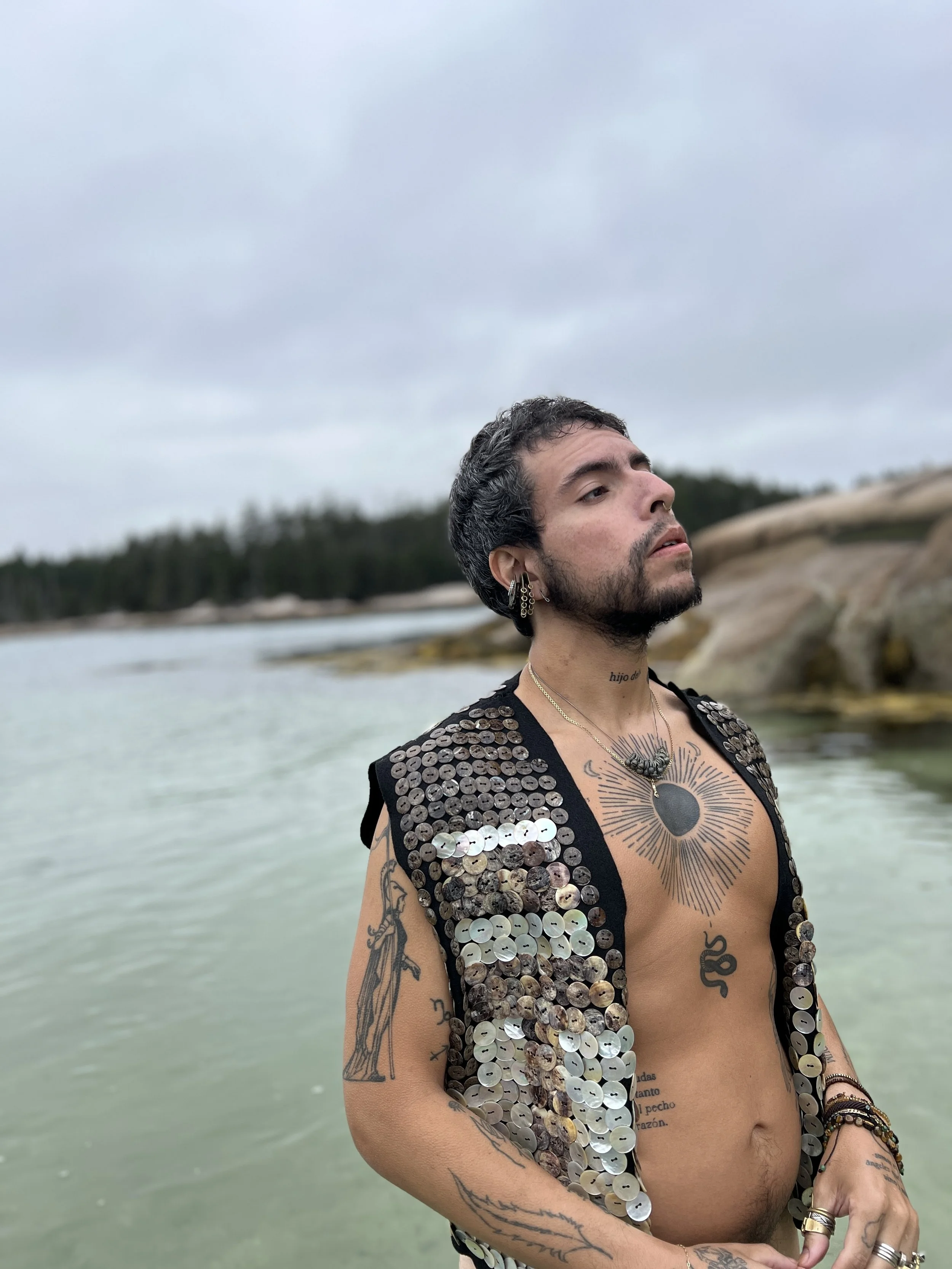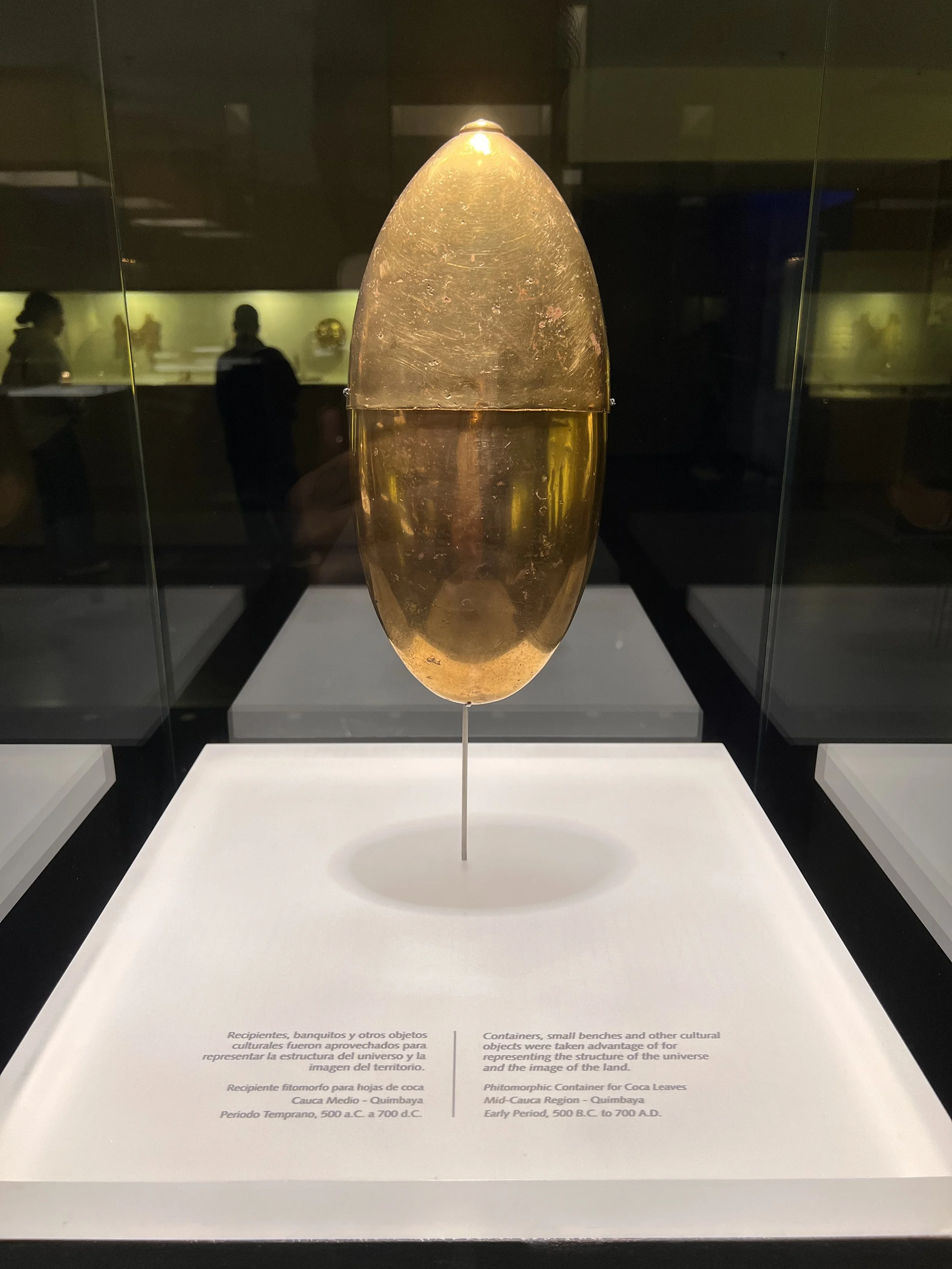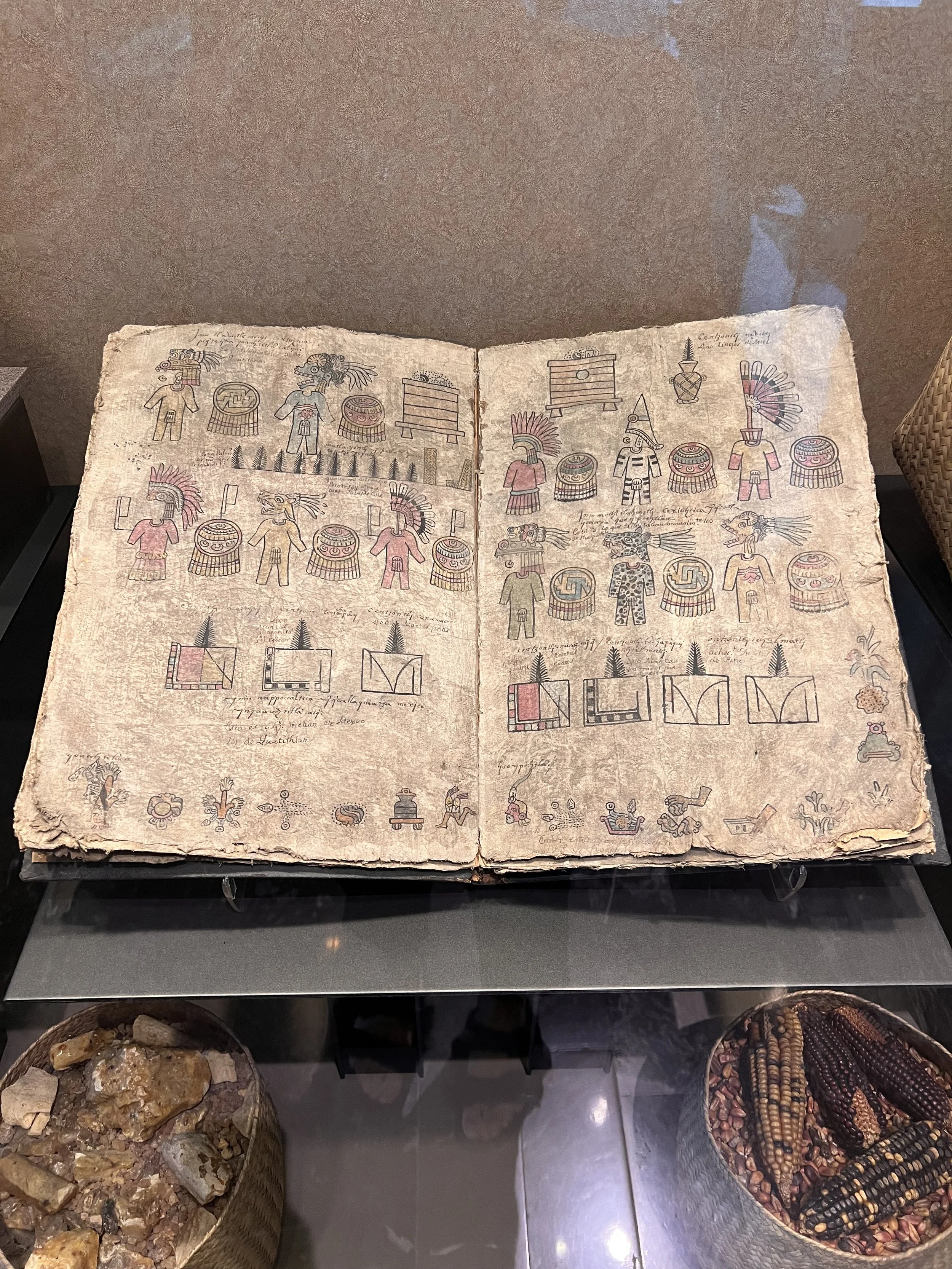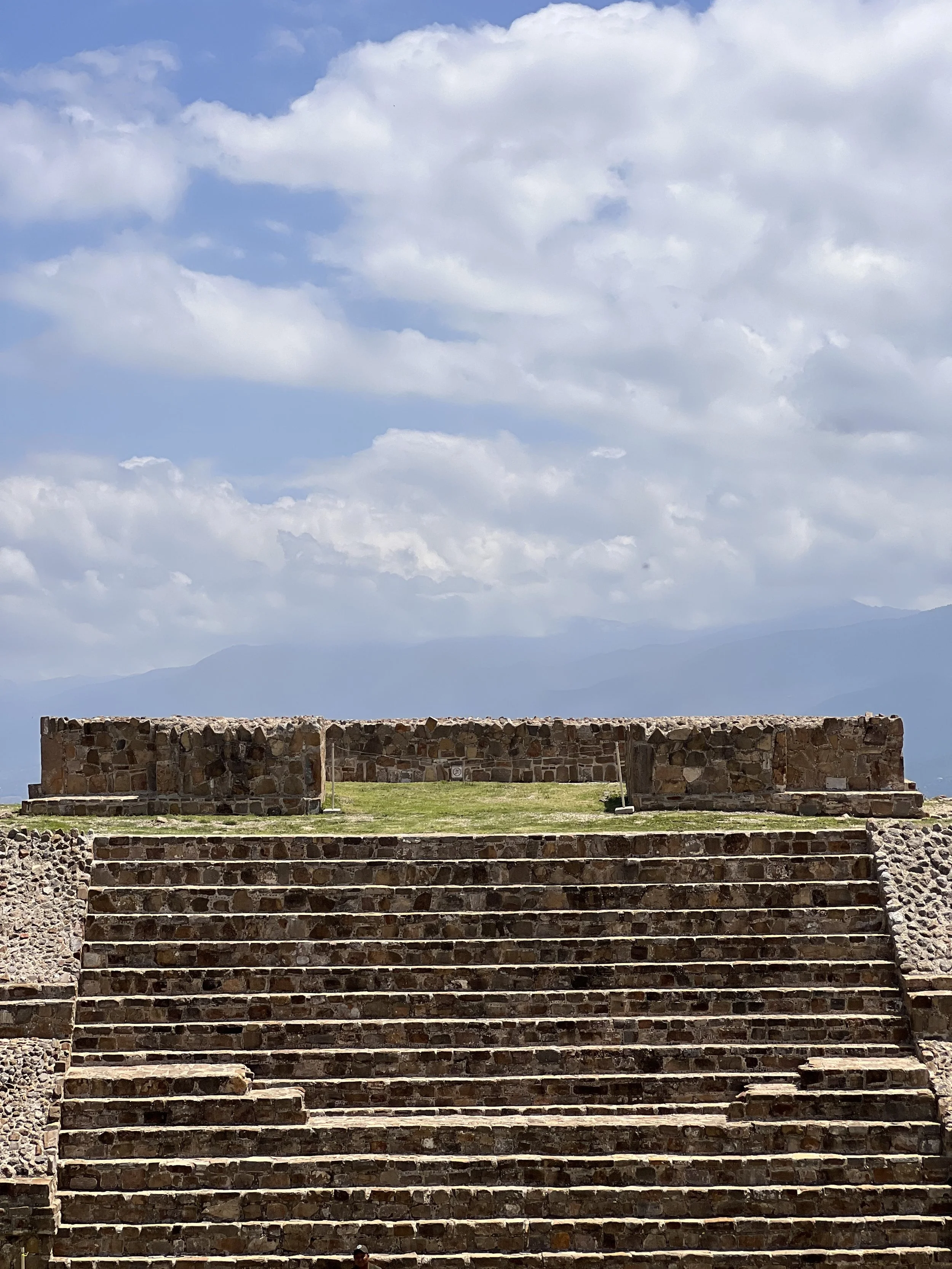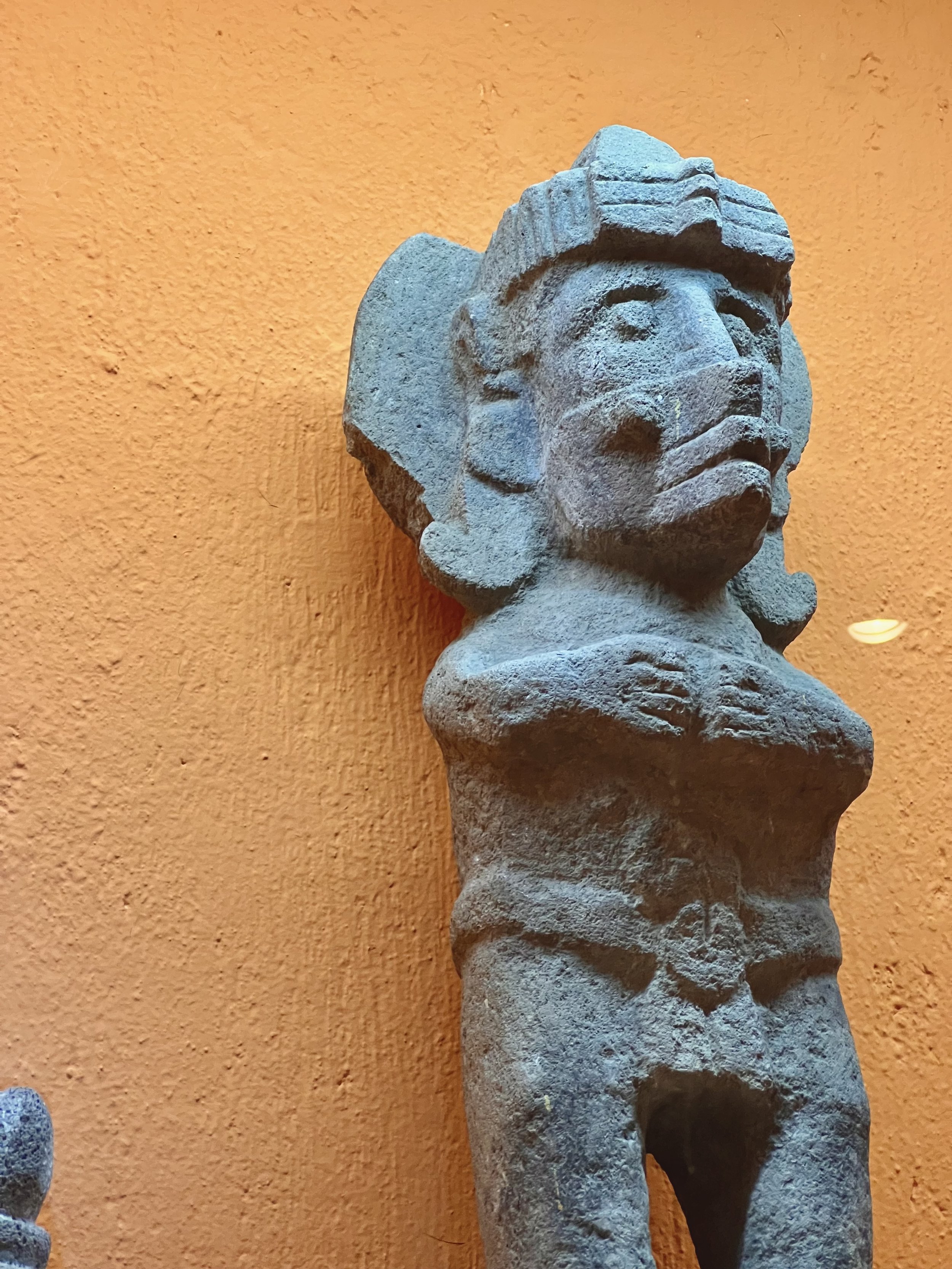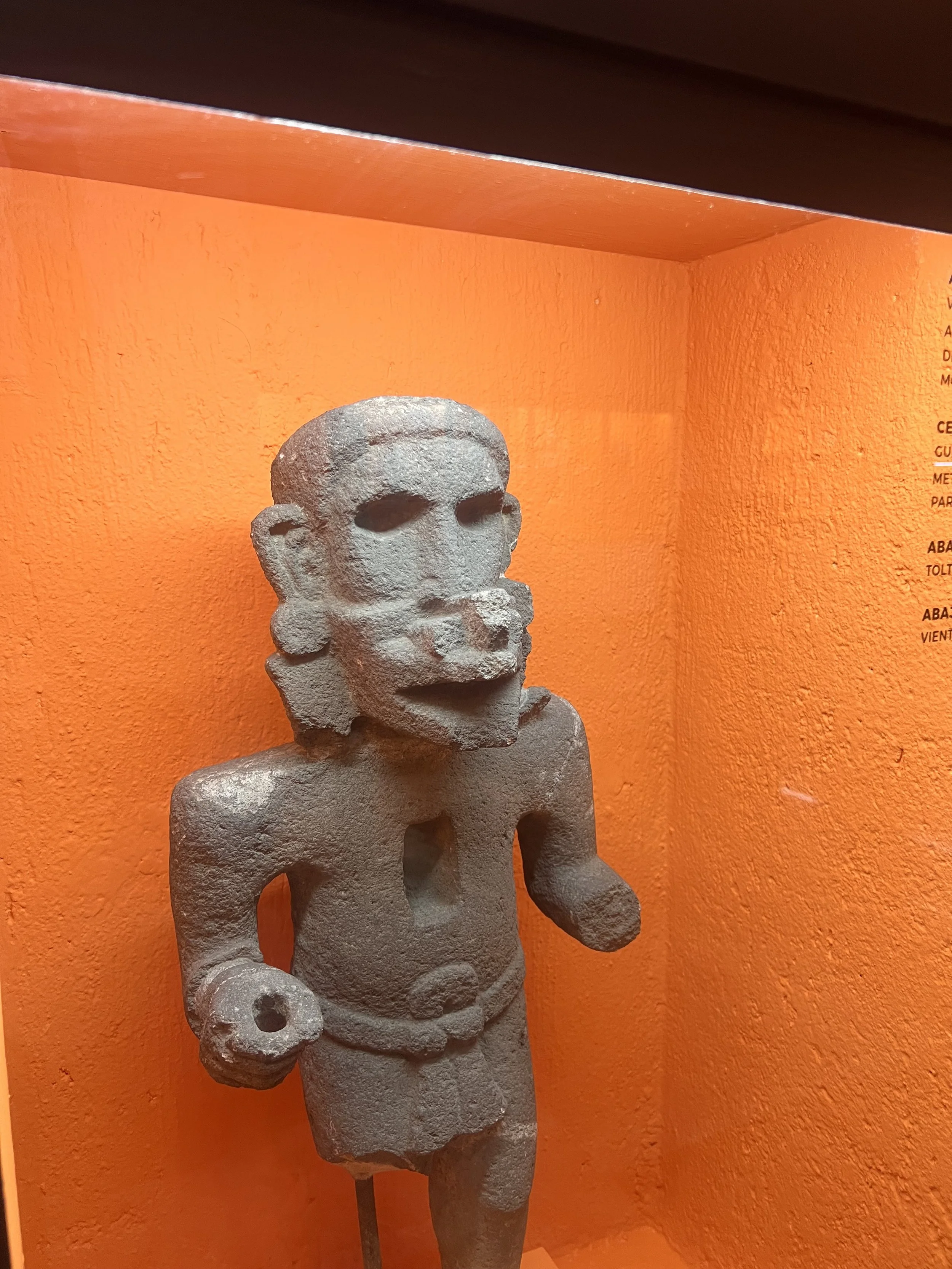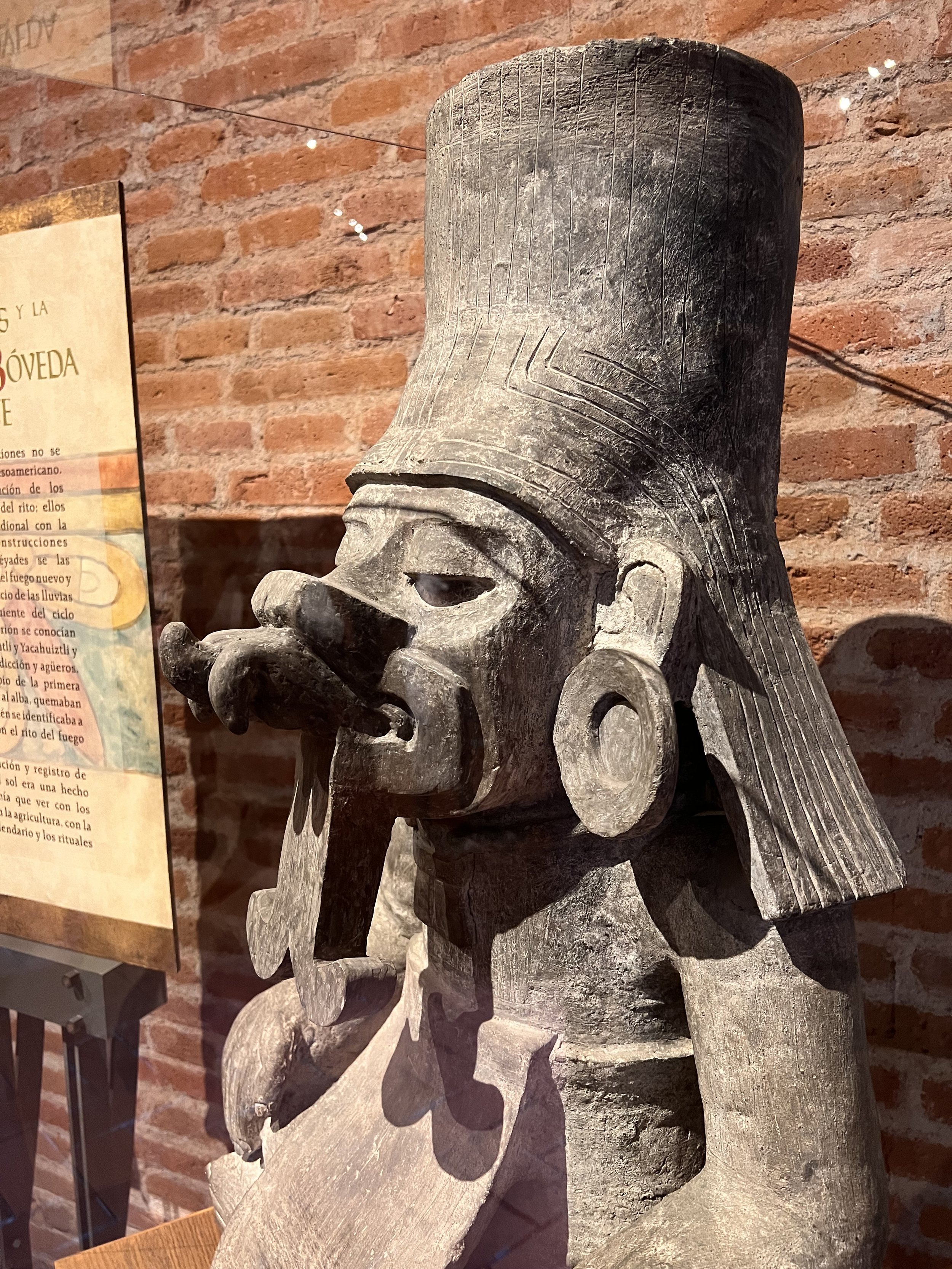A Él Mismo - Pt. 3 Sabbatical Response Pieces.
Scroll down and conclude your adventure meeting each of the Aspects.
El del Mar.
Response Aspect to Bogotá.
—-
First off is the Aspect, El del Mar, who represents my reflections on my time spent in Bogotá.
It felt too expected for myself to pull from the metal and gold work, so l instead wanted to challenge myself & draw inspiration from a less obvious & expected source.
El del Mar is in turn inspired, driven, & informed by 2 points, first being examples of shell work, & second was examples of poporos I got to experience while at el Museo del Oro.
The 1st shell piece that really captivated me was a funerary attire that had been excavated in the town of Suárez, this large necklace composed of slabs of shell, accented with gold earrings and a nariguera.
The 2nd being a sea snail shell, where a Cauca valley goldsmith pressed seven thin sheets of gold onto the shell.
The natural shell has since deteriorated, leaving behind a gold "skeleton."
The 3rd piece that seamlessly folded into the inspiration was the Poporo Quimbaya, a container used to store lime that was used in the ritual of chewing coca leaves.
The lime was produced from burnt & crushed sea-shells.
For me, these objects expressed the importance that seashells held, as forms of expression, ritual, & honoring the sacred materials given to us by the Earth.
My objective was to honor the shell as a decorative object, highlighting the richness of the material, honoring both sides, the light & the dark. Using the depth of the material to highlight the body.
The nariguera and ear cuff reference the funerary jewelry set, and the bag, a reference to the Poporo, honored by decorating it with the very material it would contain.
El de la Lluvia.
Response Aspect to CDMX.
—-
Next is the Aspect, El de la Liuvia, who represents my reflections & experiences from my time in CDMX.
This Aspect is heavily influenced & informed by Tlāloc, the god of rain. He is a representation of earthly fertility & water, worshipped as a giver of life & sustenance. He is feared, but not maliciously, for his power over hail, thunder, lightning, & rain.
The piece that guided the development and creation of this Aspect was the Tlāloc vase at el Templo Mayor.
Outside of just being able to finally experience the piece in person, to examine the details, the colors, the craftsmanship & stand before something that was made by another human hundreds of years ago, in veneration for the god, left such a profound impression on me. It's an energy that I continued to experience as I traveled through Mexico, it's a connection that I want to continue to explore within myself and practice.
My objective was to honor Tlāloc, using the vase as my point of reference, highlighting the visual language of the object.
For the design of the jacket I pulled the color blocking, the geometric shapes of the "ears", and took the opportunity to continue exploring new colored staples, and staple combinations.
I paired the jacket with a rust colored draped tank with an exaggerated front crotch drape, and a fitted navy silk chiffon wrapped skirt, both color choices to highlight and compliment the colors found within the base/jacket.
The Nariguera is a laser cut gold paper mock up with engraved details found along the face of the vase.
El Cuextecatl.
Response Aspect to Ajijic.
—-
Next is the Aspect, El Cuextecatl, representing Ajijic, where I did a residency at 360xqmx.
During my time there, my focus was to filter through all of the sites & artifacts I had seen previously while in Bogotá & CDMX. Everyday I took one object or site and designed an Aspect in response to it.
For this Aspect, I pulled from La Matrícula de Tributos, also known as Códice Moctezuma, a collection of listings the tributes paid by the various tributaries of the Aztec Empire. I was fortunate enough to see fragments of it at el Museo Nacional de Antropología. I was particularly drawn to the pages that displayed various trajes de guerreros, (warrior outfits) & very specifically the outfit in white with the black linear details, called a Tlahuiztli.
I focused on expanding the visual language of the Tlahuiztli's linear decoration, & used those shapes to be the embellished staple component in the garment.
I pulled away from the one-piece outfit of the traditional Tlahuiztli & expanded it to be a series of garments, an over coat, under coat, and a pair of shorts, each playing with the scale of the bar motif in incremental sizes.
This piece doubled as an exercise for myself to bring exploring more "practical" and "wearable" garments that would be found within Perdida, the world where "A Él Mismo" lives. Pieces more along the lines of what everyday inhabitants would wear, rather than the more specific and elaborate concepts.
This is a motif / patterning that I want to return to in the future, to continue exploring different color ways and layering combinations.
El del Viento.
Response Aspect to Oaxaca.
—-
The last sabbatical Aspect, El del Viento, represents my time in Oaxaca, where this entire project, "A El Mismo" was born pre-pandemic.
About 2 weeks before the world quarantined for COVID 19, 1 had the privilege of being in Oaxaca., that had been my first time in Mexico, & the first time I had been back in a spanish speaking country since I was 4 years old in Colombia.
Upon returning to the states, a few weeks later we were quarantined and I was left with time to contemplate, and process the experience of what the trip to Oaxaca had surfaced in my mind. Through a series of weeks and conceptualizing, the idea for the project "A Él Mismo" was born.
I wanted to end my sabbatical in Oaxaca, as a full circle experience, being back with a new found sense of self, a different perspective on my lineage, and after spending a few years developing and growing this passion project.
The Aspect is an exploration to Ehehcatl, a wind deity, an aspect of Quetzalcoatl.
Along with Tlāloc, he was a presence I felt I had continuous experiences with while I traveled.
For this piece, I pulled its color, lines, and textures from the structural remains of Monte Albán, the environment it's set in, and an artifact from el Museo de las Culturas de Oaxaca.I embellished the sage wool with the exposed teeth of silver staples, and highlighted it with mint foil detailing, to beckon back to the Aspect El Yerbero.
The "beak" sample made of full staple rows.








